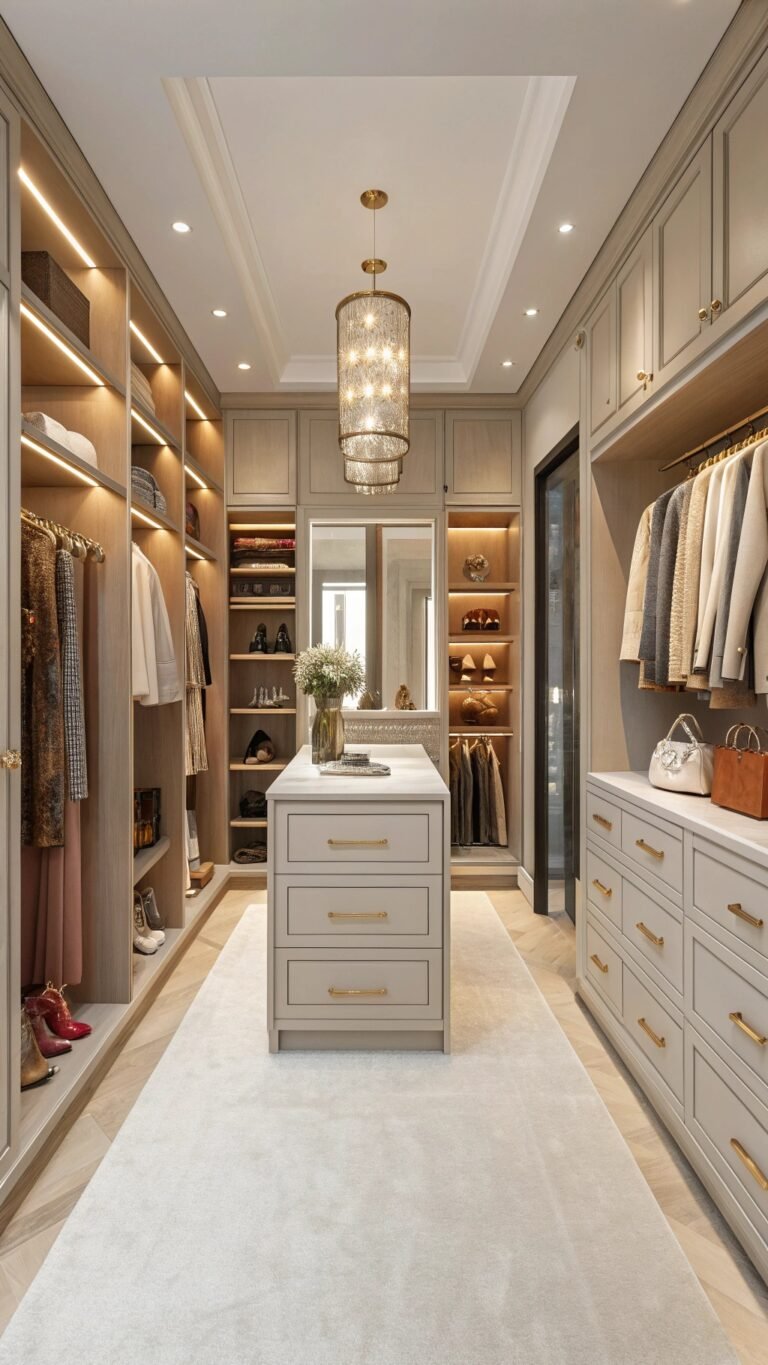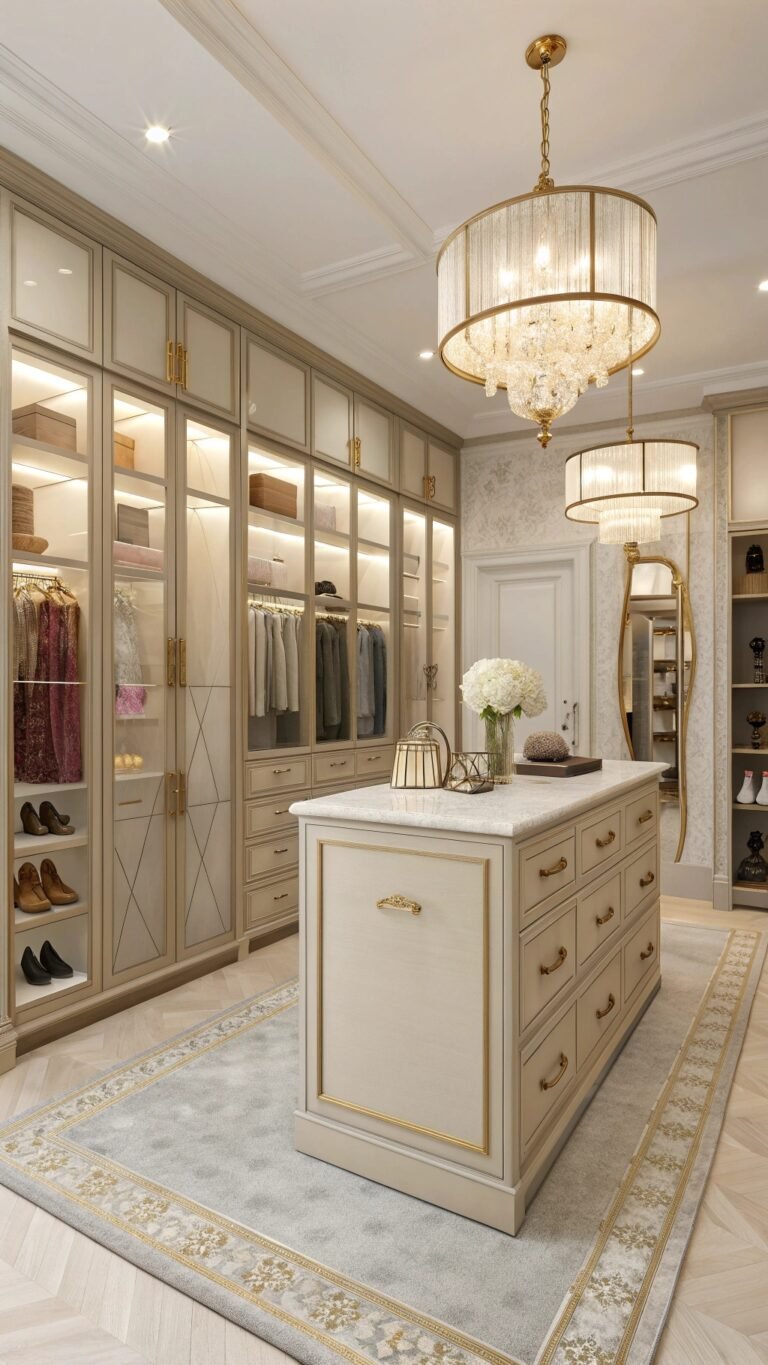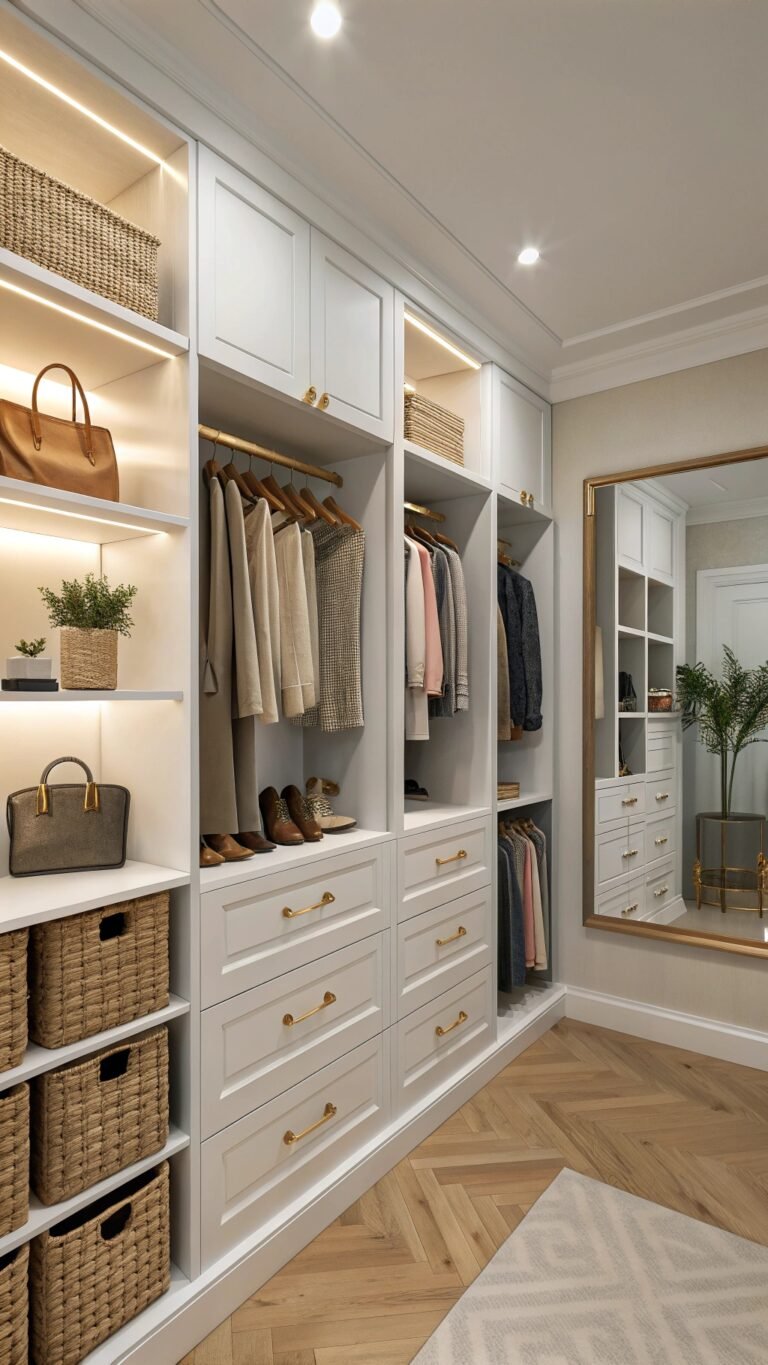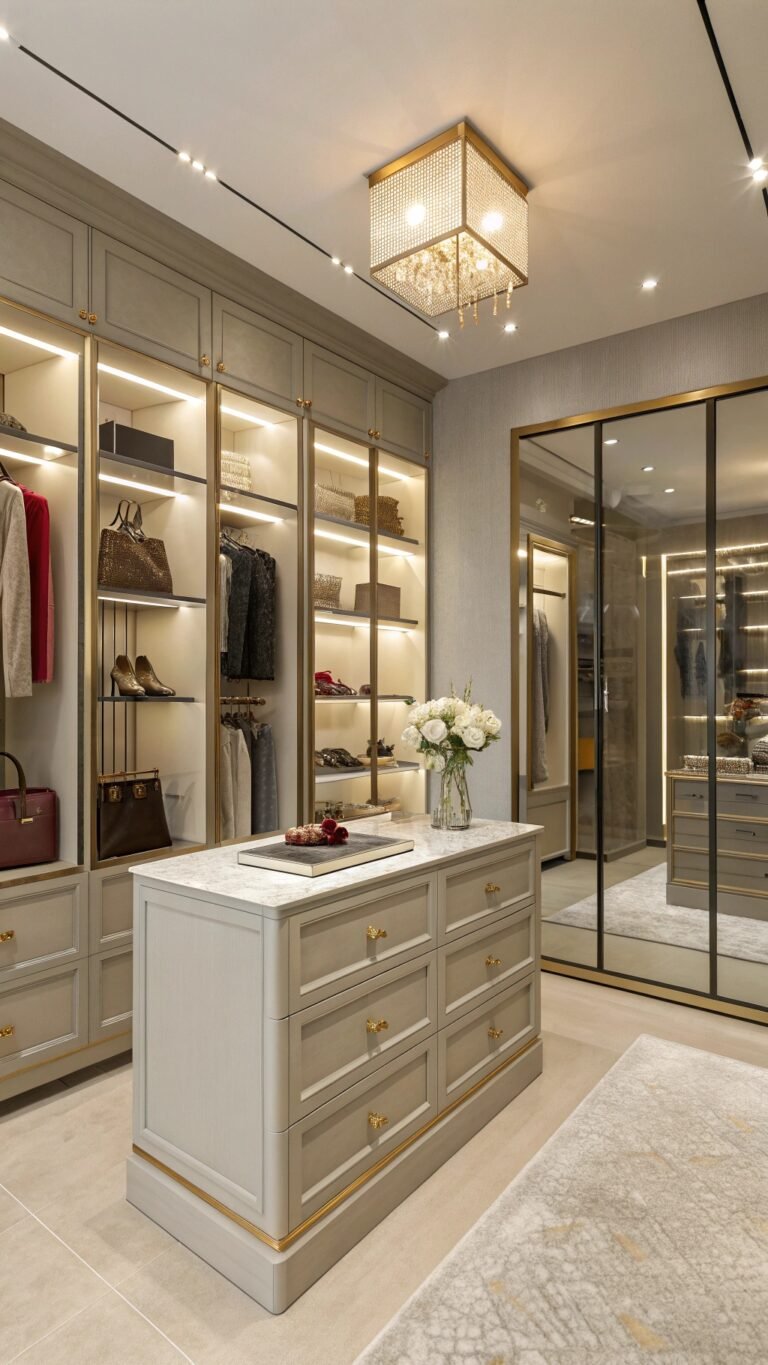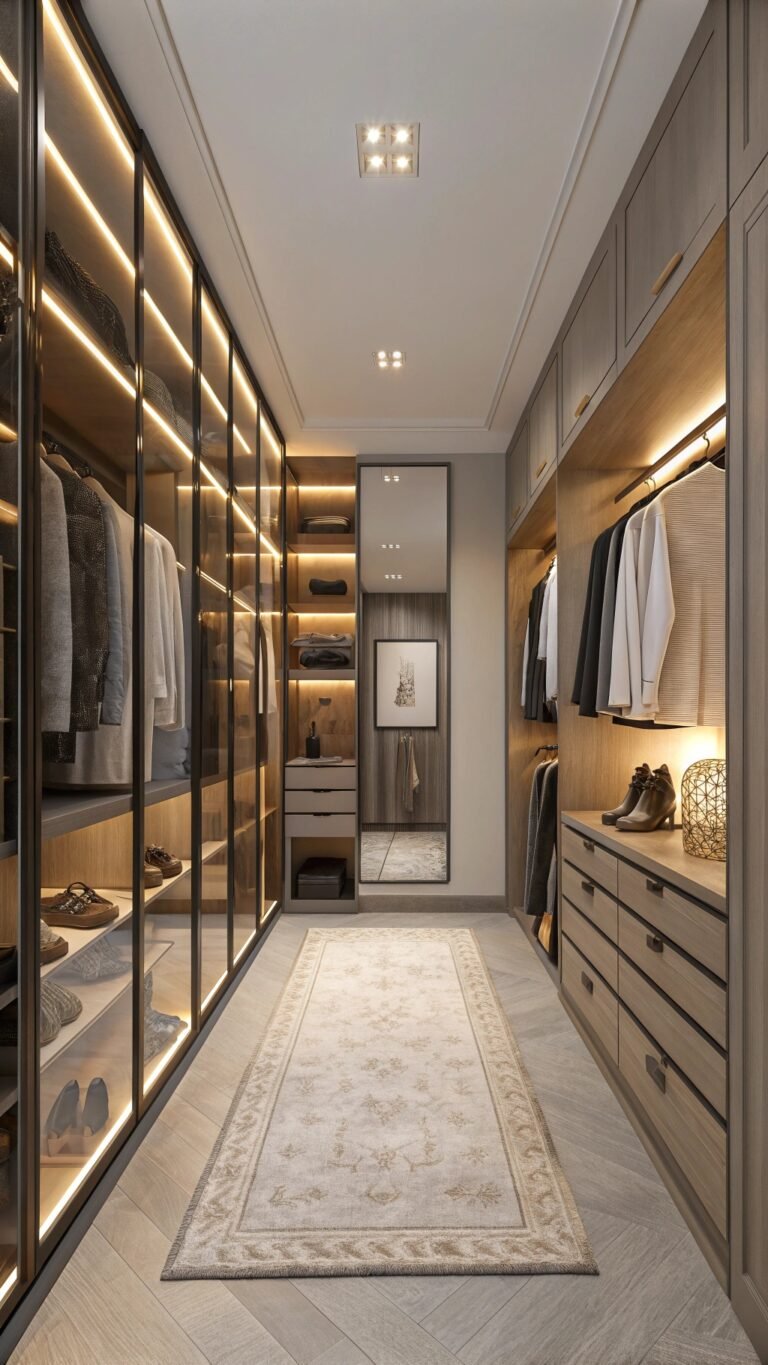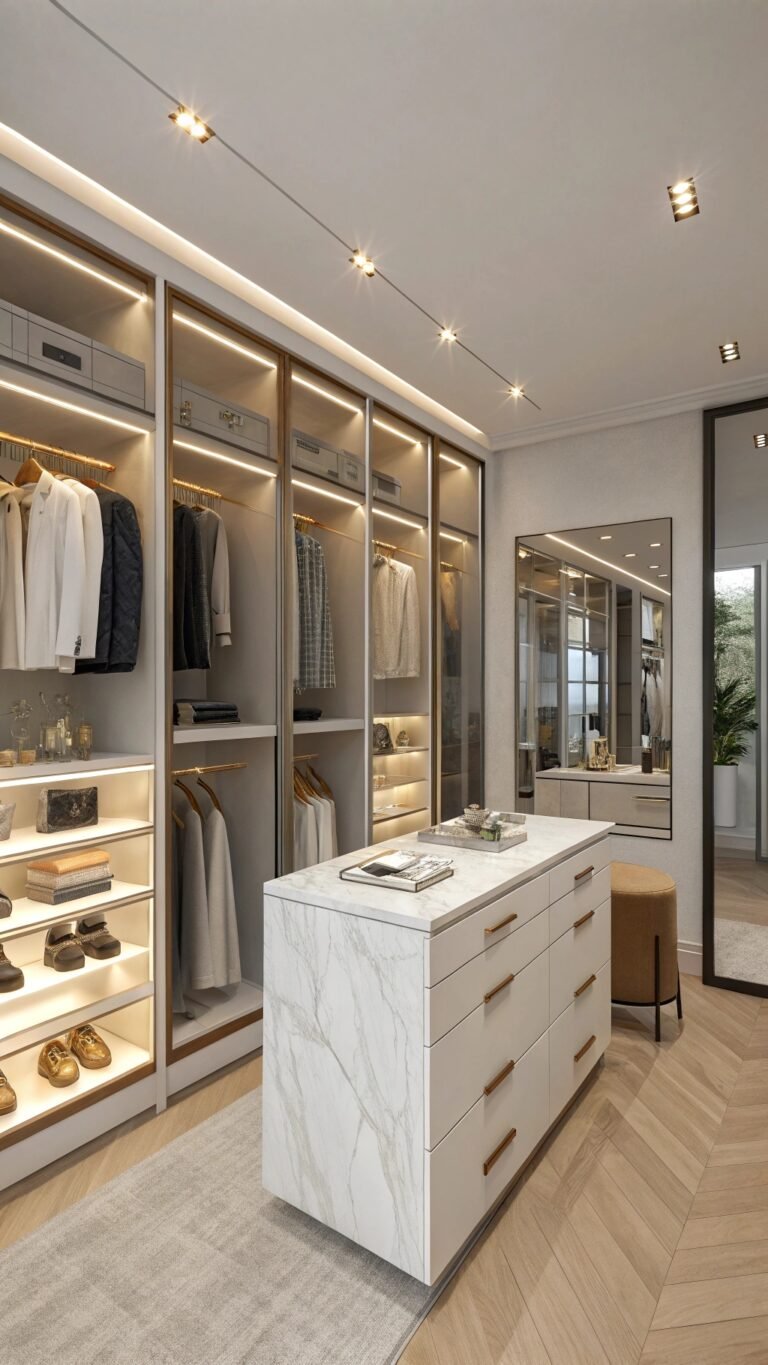Closet Organization: 19 Proven Ideas That Make Space, Save Time, and Look Beautiful
Closet organization is trending because people want calm, camera-ready storage that speeds daily routines.
Designers now treat closets like mini-boutiques—layered lighting, drawer systems, and display moments—so wardrobes stay visible and tidy.
1) Zone by Capsule, Not by Category
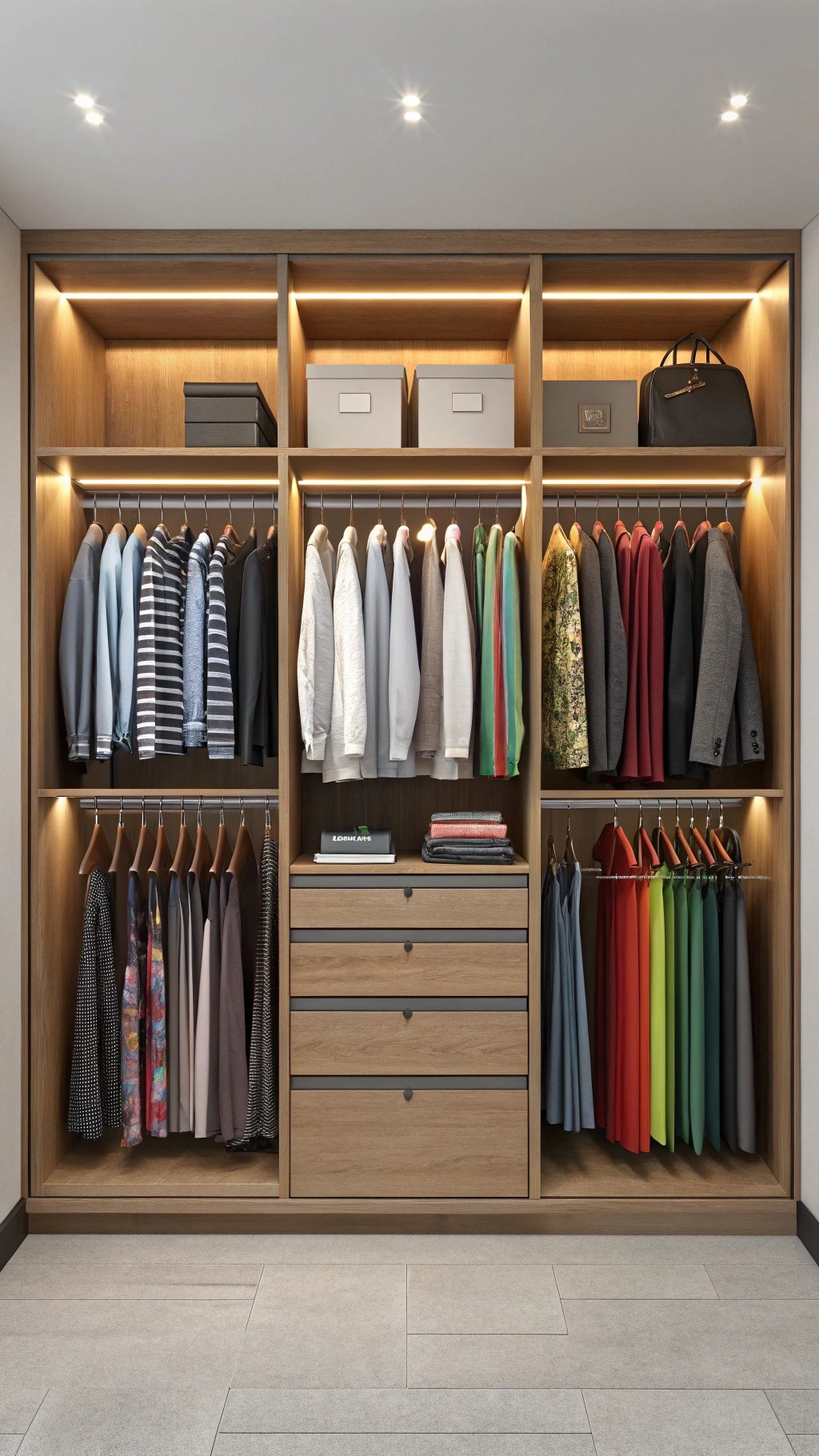
Organize around how you get dressed—work capsule, weekend capsule, gym capsule—instead of dumping all shirts together.
Keep each capsule’s tops, bottoms, shoes, and key accessories within one reach radius, using double-hang for volume and one shelf for folded knits. This reduces laps around the room and makes outfit building automatic.
What makes something unique:
Give every capsule a color band (painted shelf edge or fabric label) so items return home fast. Add a slim valet rod per capsule for next-day staging.
The capsule-first layout mirrors the way you think, cutting decision fatigue and keeping resets under five minutes even after busy weeks.
2) Double-Hang + Long-Hang in the Right Places
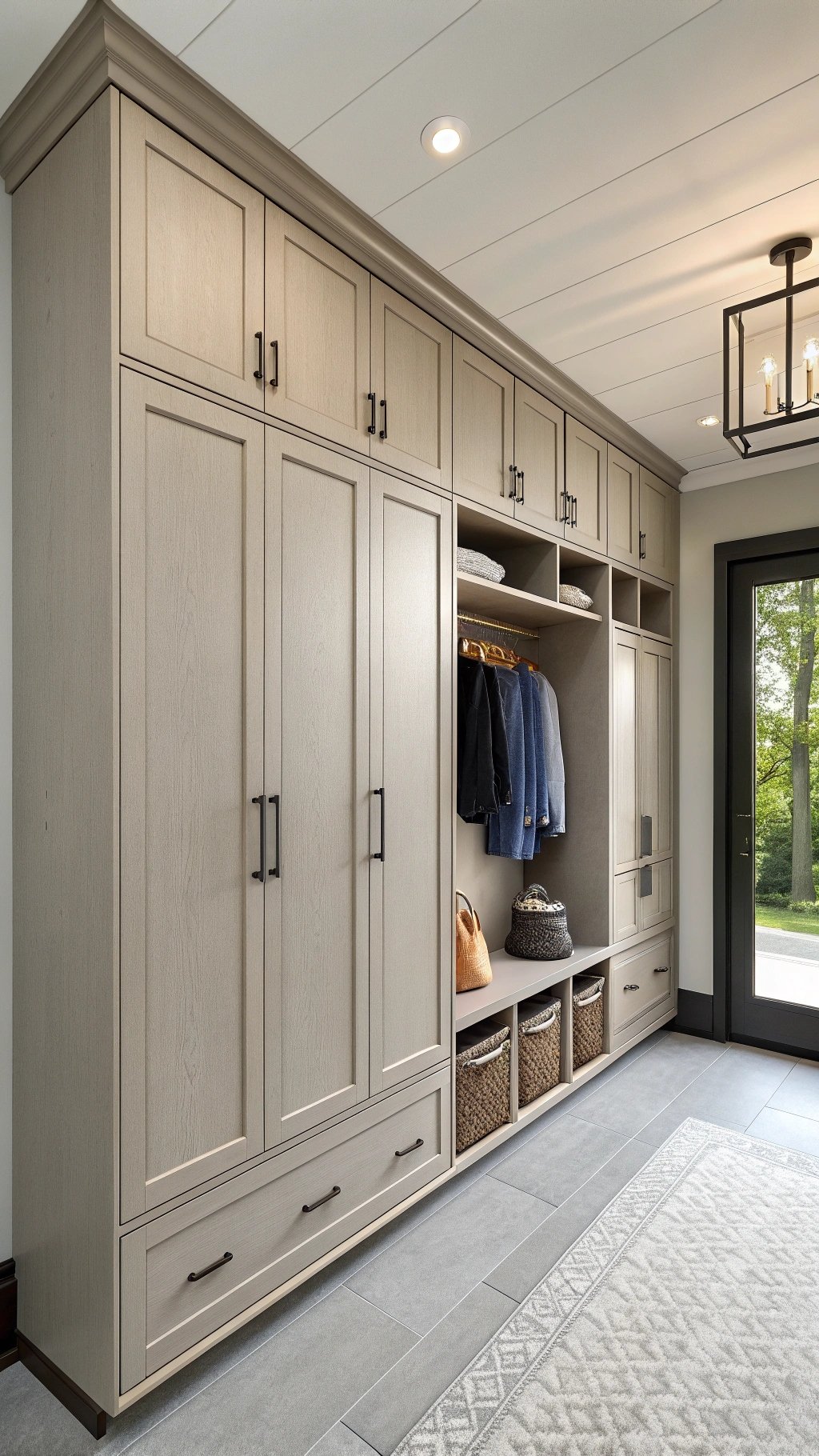
Most closets need two-thirds double-hang and one-third long-hang. Place long-hang near the entrance for dresses and coats, and stack double-hang where shirts, blazers, and trousers live.
Adjustable rails future-proof the space as styles change. Keep shelf depth modest so piles don’t slouch.
What makes something unique:
Add a pull-down wardrobe lift in the highest bay so tall storage stays usable. Mirror the rail datum across the run for visual calm.
With precise proportions, you’ll see everything at once—and stop ironing creases caused by cramped rails.
3) Drawer Inserts that Make Folding Foolproof
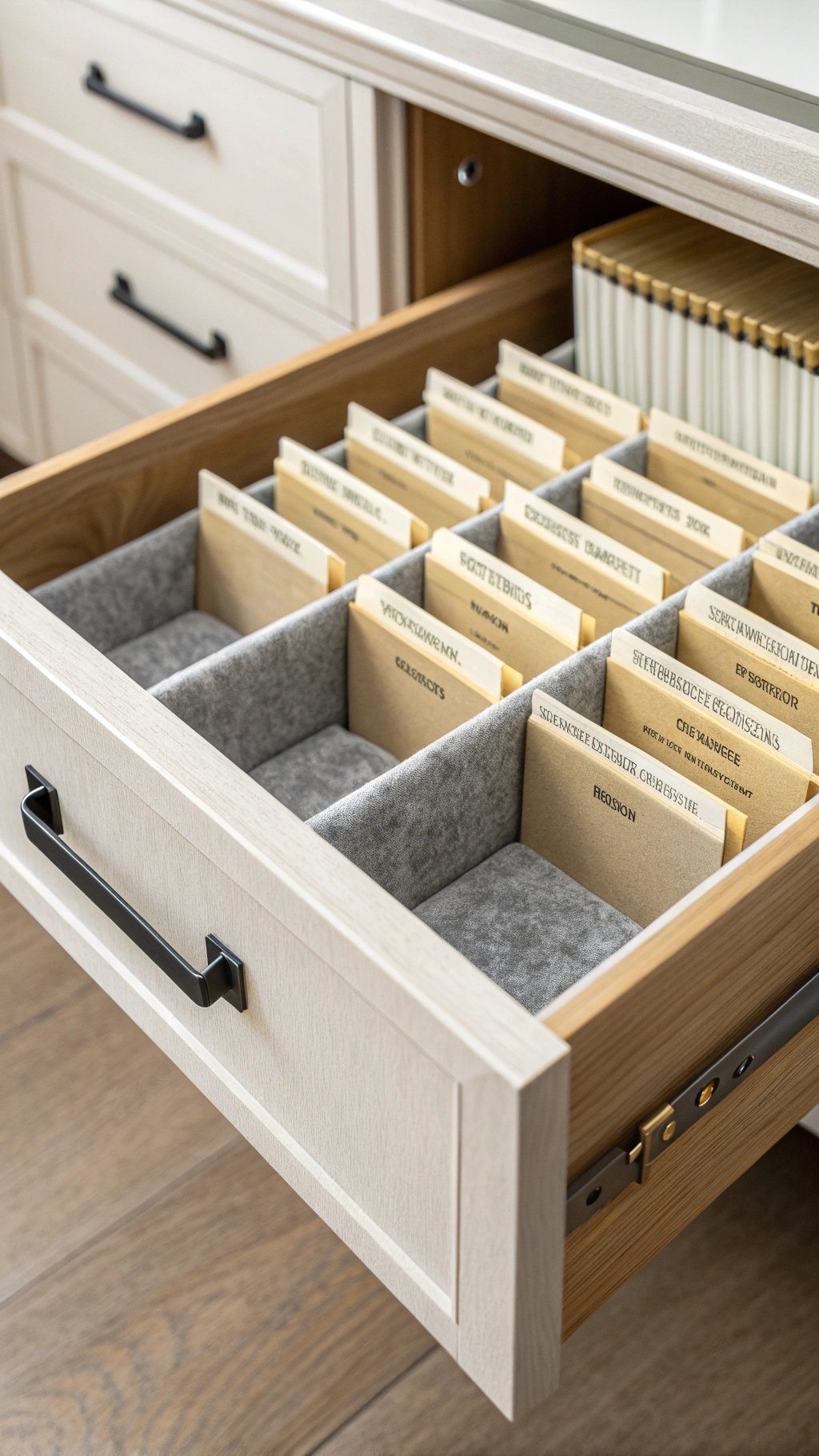
Use shallow, full-extension drawers for tees, knits, and intimates. Fit them with modular inserts—file-fold channels for tees, soft bins for socks, felt-lined cells for delicates—so each fold has a home.
Inserts prevent over-stuffing, protect fabrics, and speed visual scans.
What makes something unique:
Color-match felt or linen liners to cabinet interiors for a custom look, then laser-label the drawer lips discreetly.
Add a heat-safe bay with an interior outlet for hair tools or a travel steamer. Everyday tasks move off countertops and into places designed for them.
4) Top-Shelf Strategy for Vertical Wins
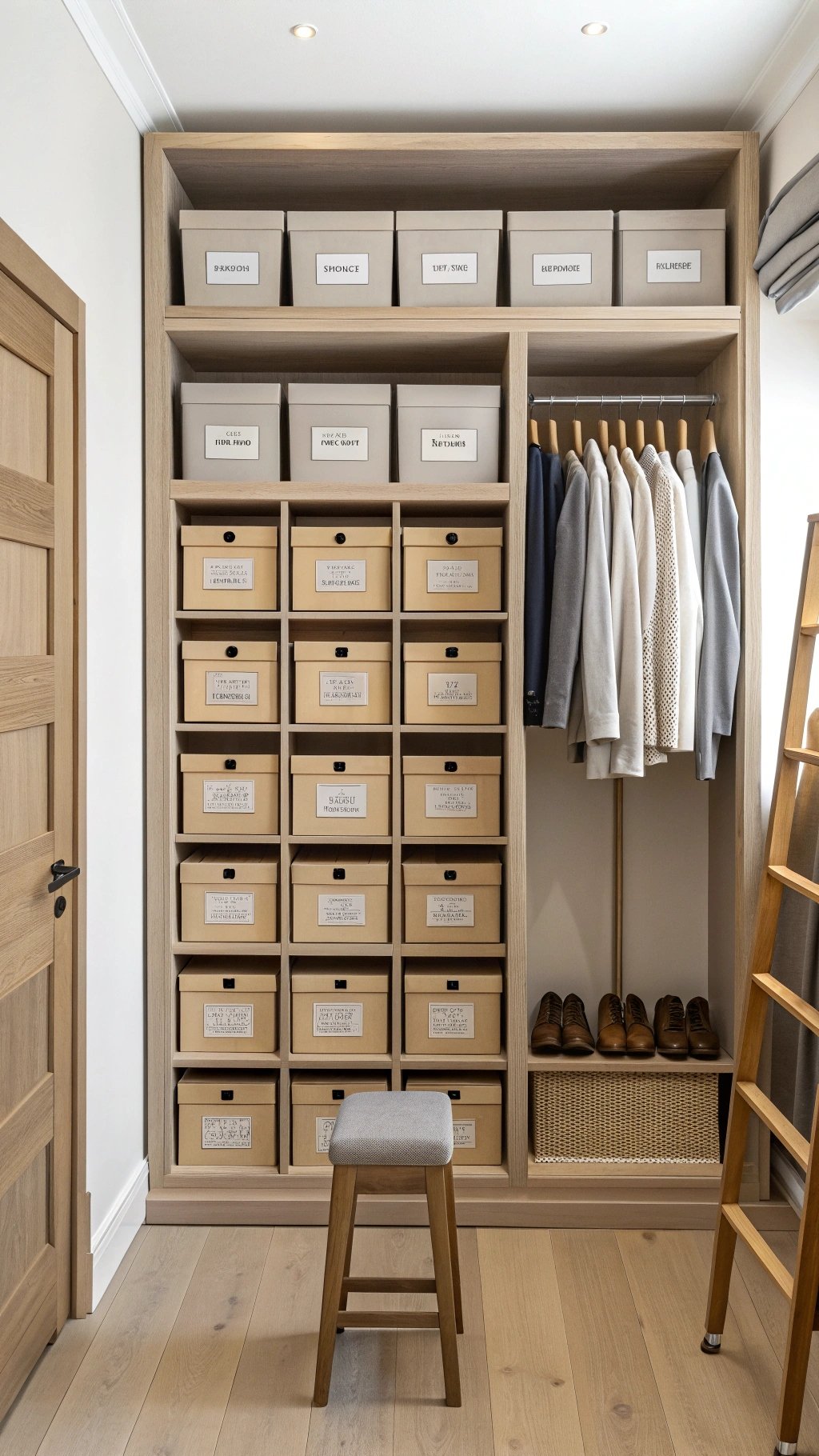
Use the full height: deep, labeled boxes for off-season items on the top shelf, everyday bins at shoulder height, and rarely used items highest.
Keep a slim foldable step stool tucked in a narrow slot. Vertical planning prevents avalanche piles and dust bunnies.
What makes something unique:
Choose uniform boxes with a small photo tag of contents—scarves, hats, occasion heels—so you spot the right bin instantly.
Repeat the same hardware pulls on boxes to reinforce the built-in feel and make retrieval smooth.
5) Doors and Dead Zones that Work Hard
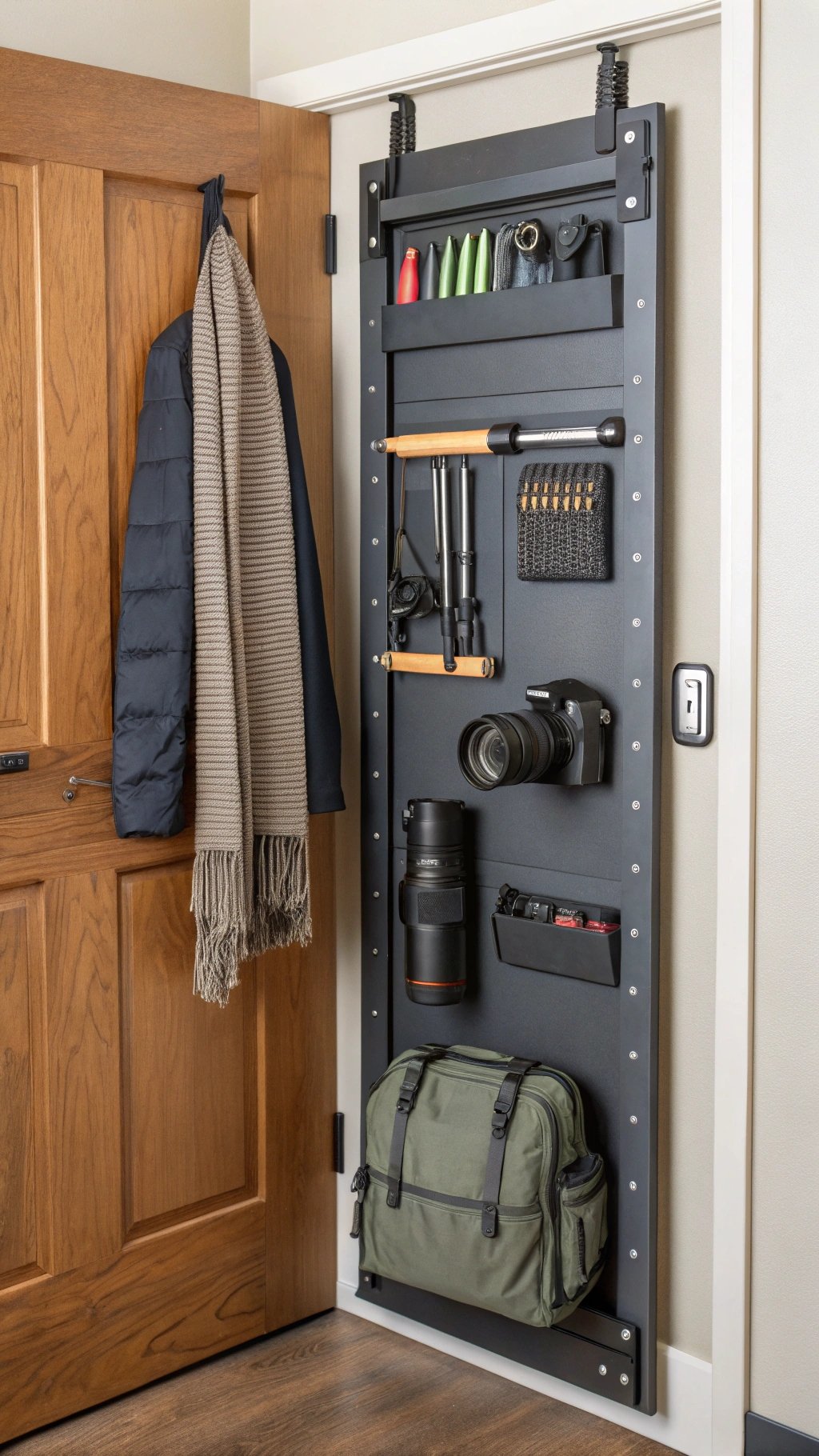
Back-of-door space is prime real estate. Install shallow rails for belts and scarves, a capped hook for hats, and a pocket for lint brush and roller.
Convert corner “dead” zones into slide-out racks or rotating carousels so nothing disappears behind a jamb.
What makes something unique:
Use soft-close pocket panels that hide when not needed, keeping the façade quiet. A tiny magnetic catch stores scissors and tailor’s chalk.
Maintenance tools live at the point of need—so a missing button gets fixed before it becomes a “pile for later.”
6) Shoe Wall You’ll Actually Keep Tidy
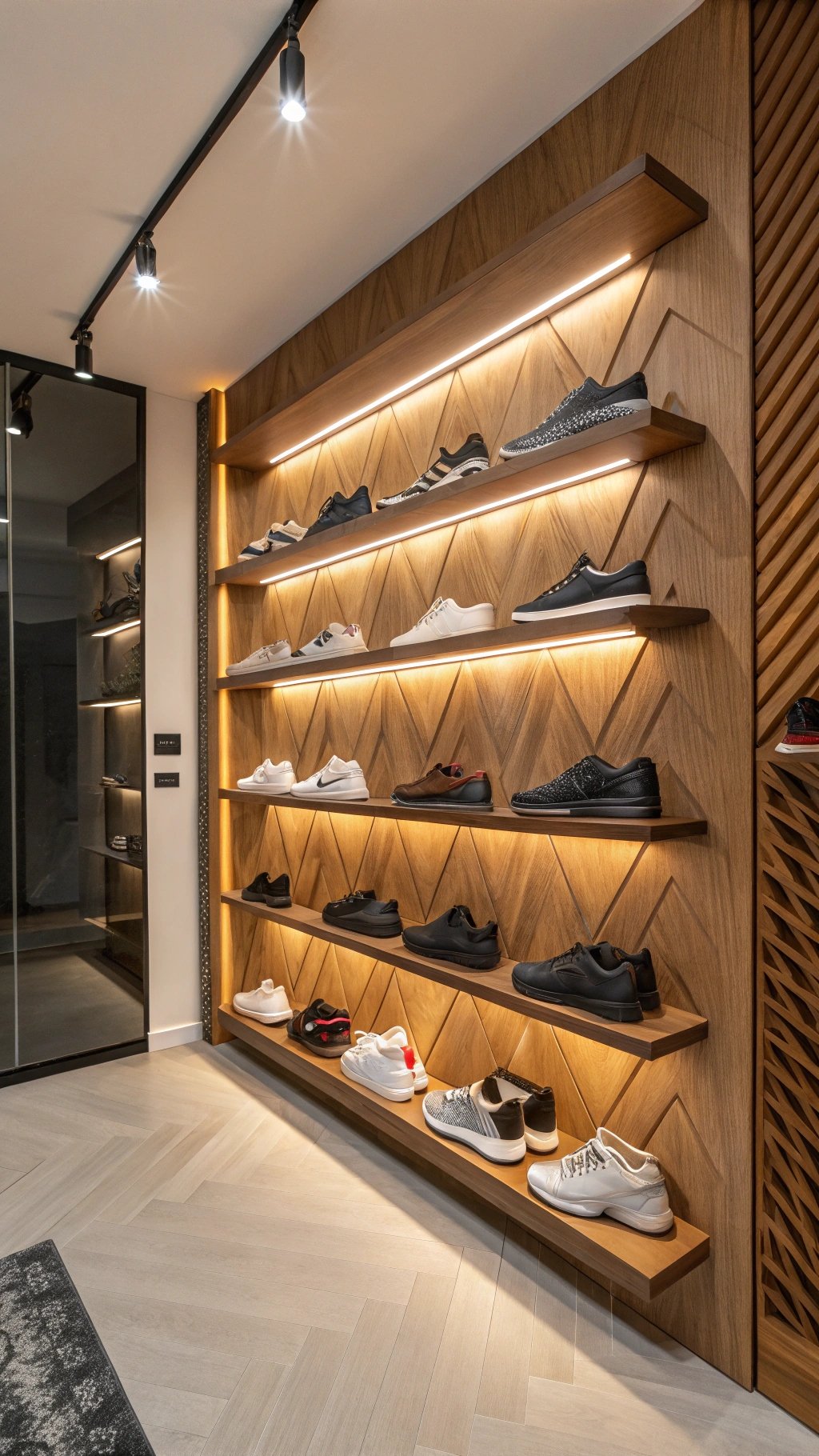
Angle shelves with a subtle lip so pairs sit securely and silhouettes stay visible. Reserve adjustable tall bays for boots and add a pull-out care drawer at the base.
Keep the shoe wall away from direct sunlight to protect leather dyes.
What makes something unique:
Run a slim LED spine down the center to graze toes lightly—museum vibes without glare. Include a hidden pull-out perch for quick try-ons, then slide it away.
Your footwear looks curated and stays together, cutting the “one shoe missing” drama.
7) Accessories Command Center
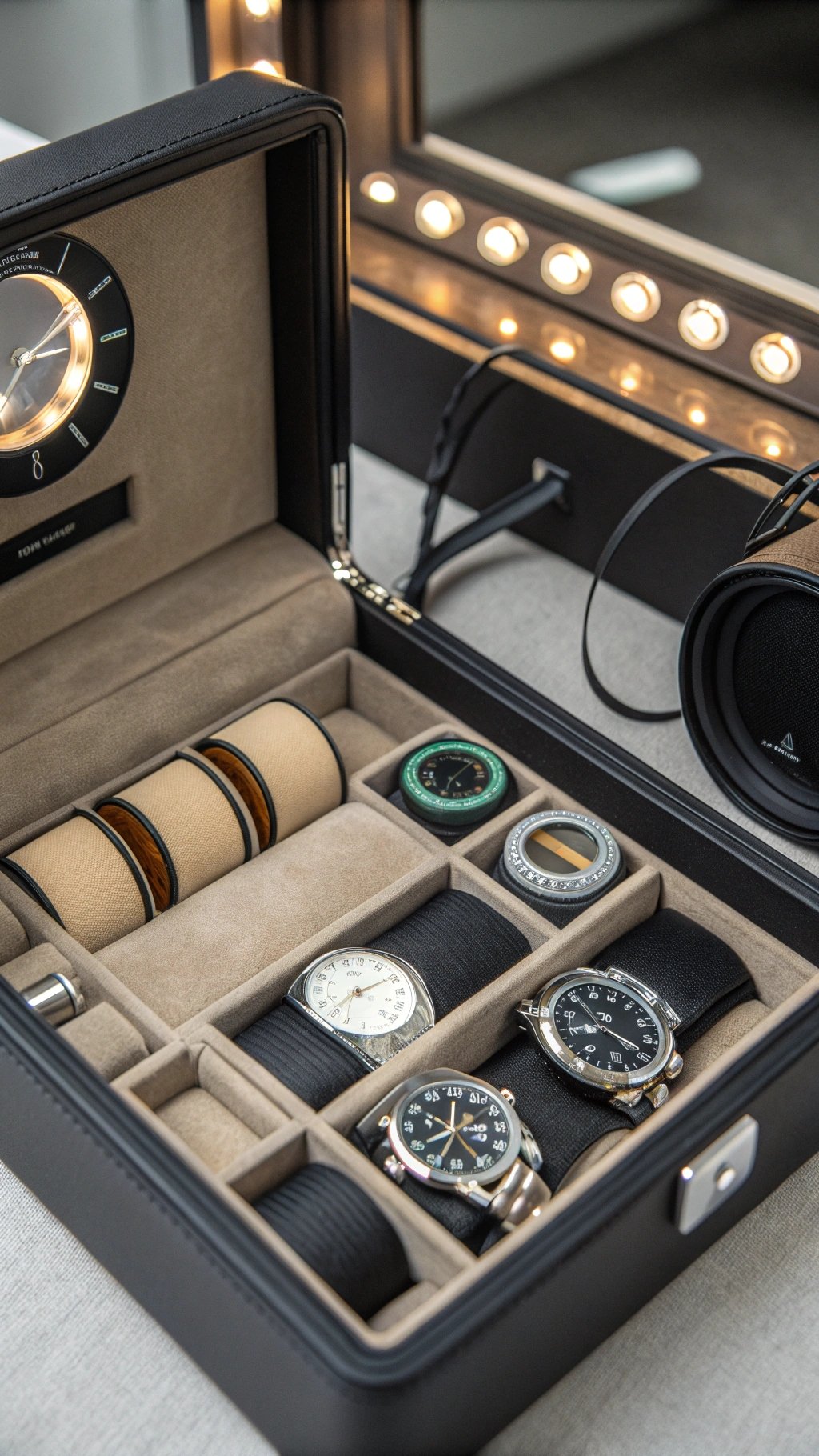
Dedicate a bank to watches, jewelry, sunglasses, and small leather goods. Felt-lined compartments prevent scratches and rattles; a shallow drawer keeps travel pouches and cleaning cloths.
A mirror-backed niche above bounces light and doubles as a quick styling spot.
What makes something unique:
Add door-triggered micro-LEDs inside the drawers and a charging tray for wearables. Keep lens wipes and case boxes in uniform sizes for visual calm.
Decisions get faster, and delicate pieces last longer because they’re stored correctly every time.
8) Color-Drench for Visual Calm
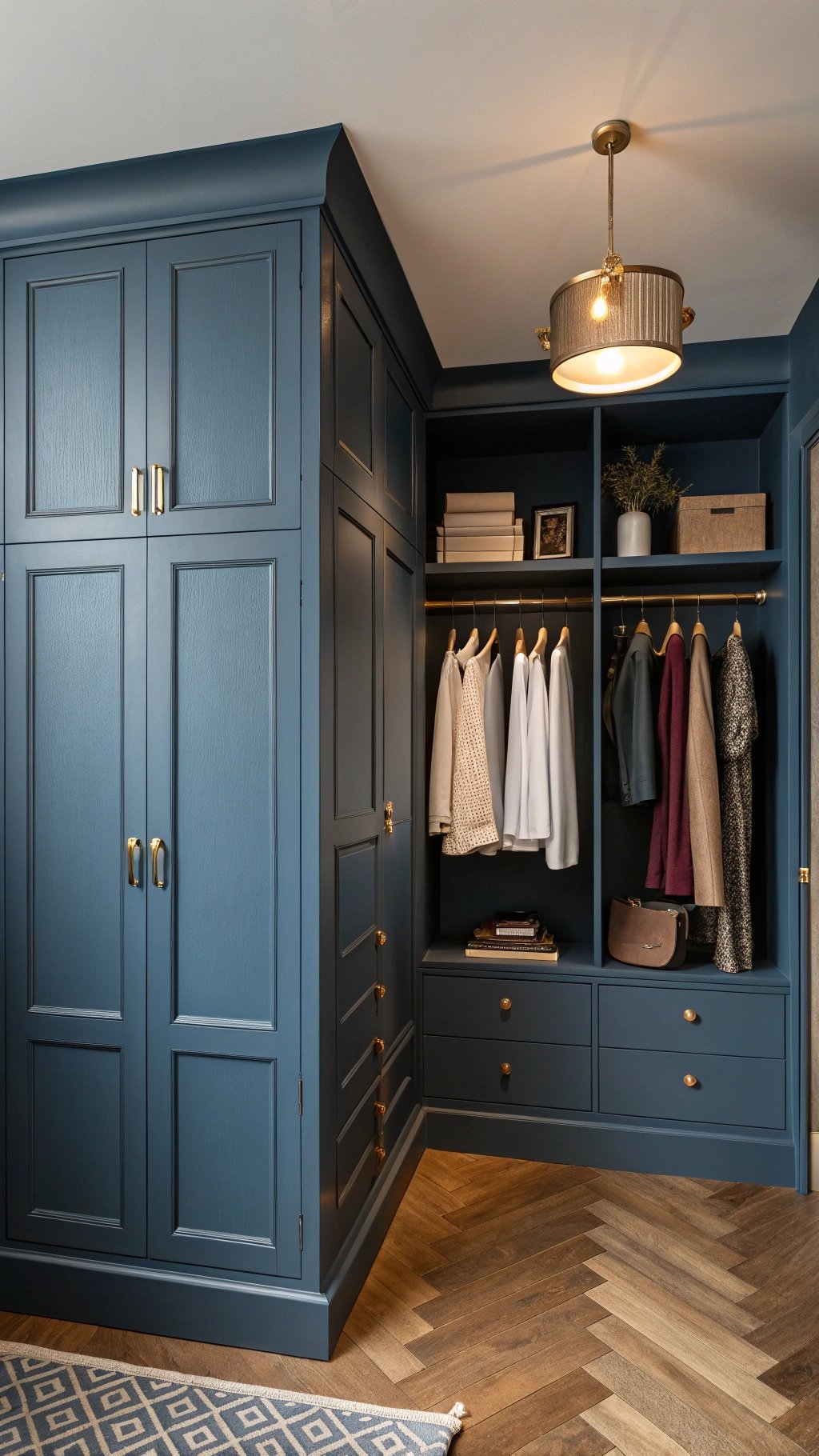
Wrap cabinetry, trim, and even the ceiling in one muted shade—mushroom, clay, or deep ink—so edges disappear and the room reads tailored.
Low-sheen paint hides scuffs and makes metal hardware glow softly.
What makes something unique:
Layer sheen, not contrast: matte faces, satin crown, and an eggshell ceiling. Repeat the hero color on a slim ottoman or island base for cohesion.
The uniform envelope feels boutique, minimizes visual noise, and is surprisingly forgiving to dust.
9) Lighting That Flatters Fabric and Skin
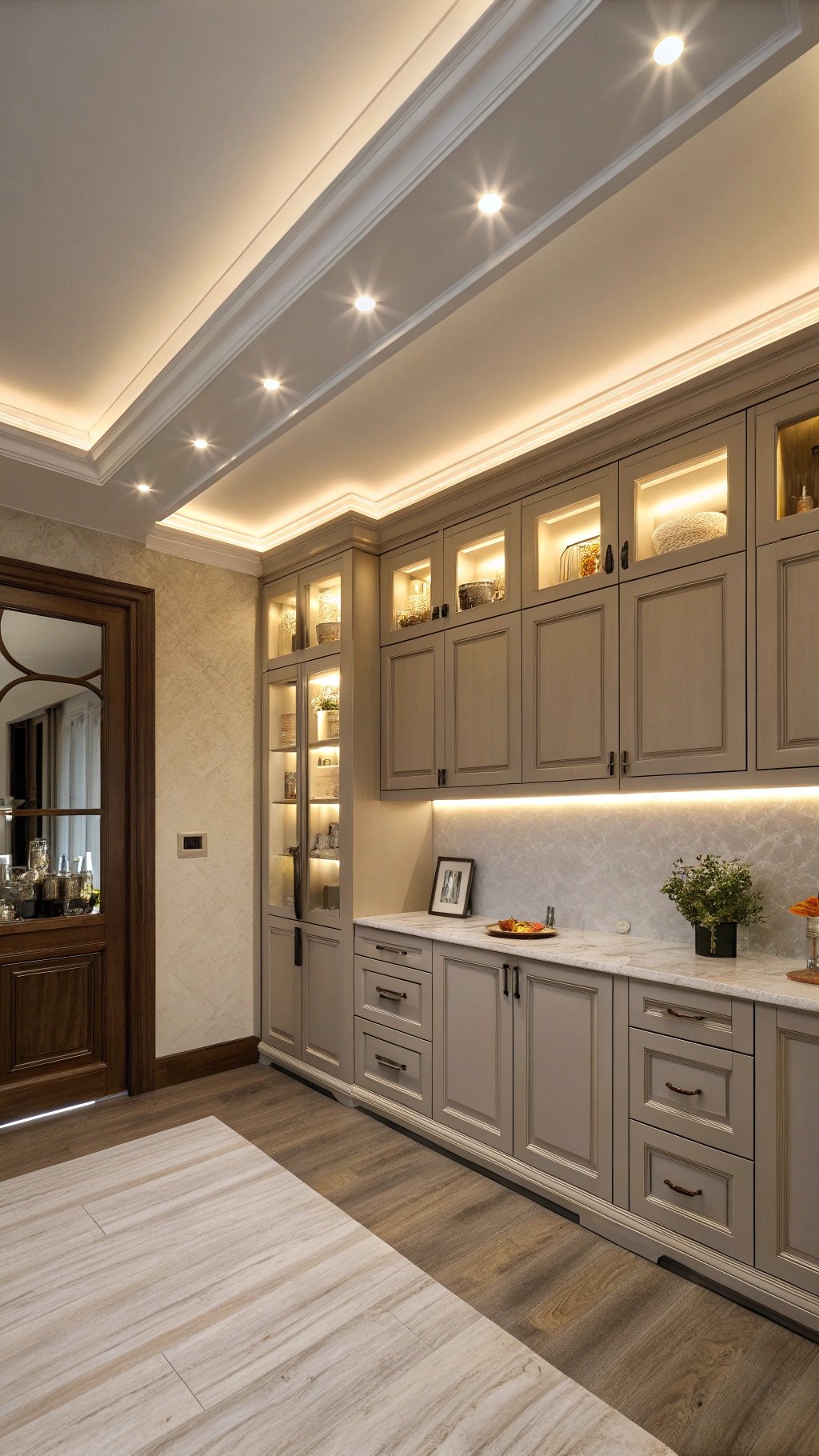
Aim for 90+ CRI at 2700–3000K so colors read true. Combine ambient (flush ceiling), task (under-shelf strips), and accent (interior cabinet LEDs).
Put “Morning,” “Pack,” and “Night” scenes on dimmers for instant mood shifts.
What makes something unique:
Hide LED tape above the top run to graze the ceiling and visually raise height, then add toe-kick glow for safe, sleepy entries.
The closet works on your timeline—bright for sorting, soft for winding down.
10) Sliding or Pocket Doors to Win Floor Space
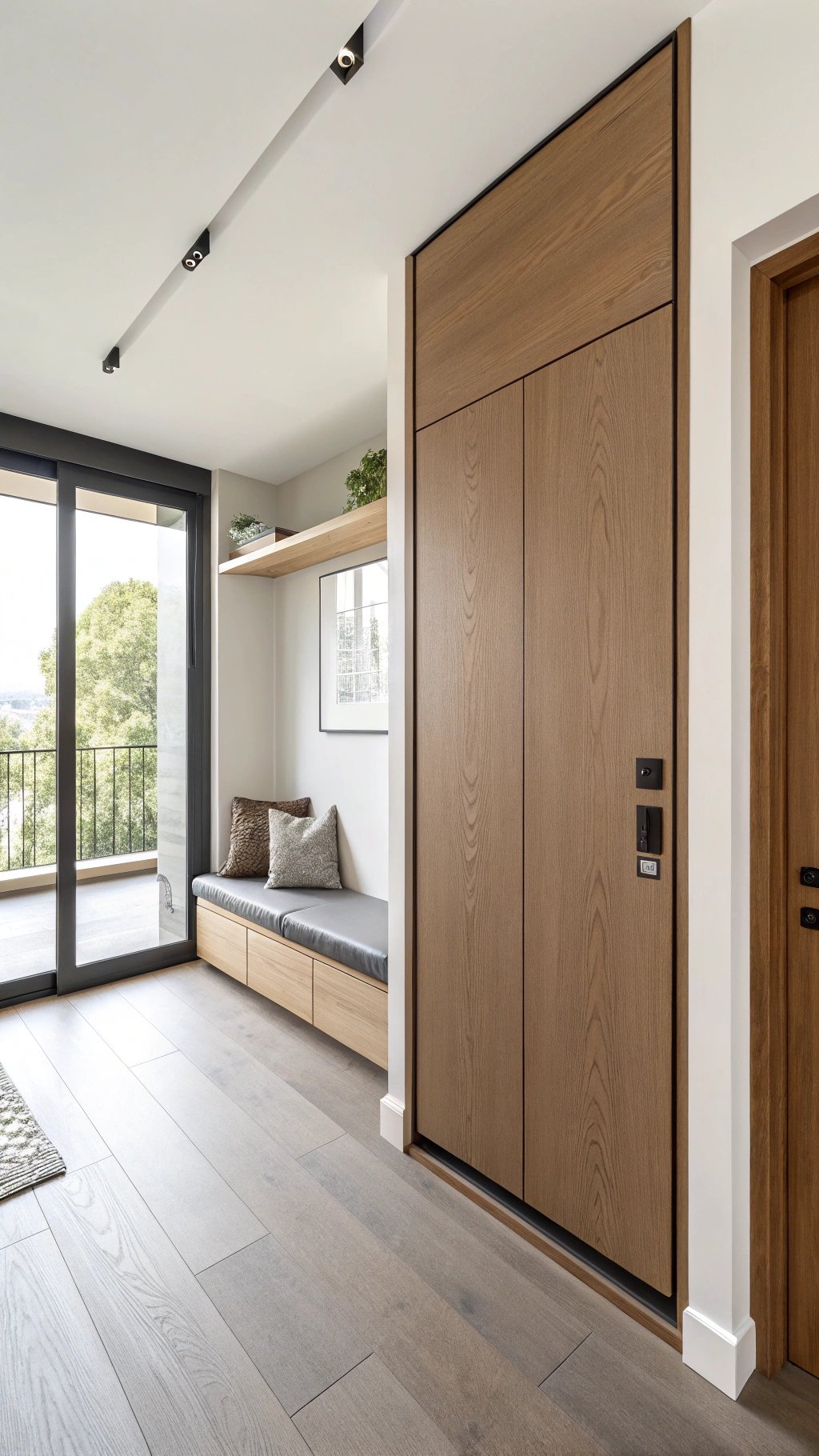
Swing doors bite into circulation. A pocket or soft-close slider frees room for longer runs or a small bench. Match the door panel to cabinet fronts for a built-in feel, or color-drench it to disappear.
What makes something unique:
Use a flush, leather-wrapped pull for a tactile detail that won’t snag clothes. Add a floor guide channel concealed in the threshold for silent, wobble-free use.
The upgrade feels refined and quietly maximizes square footage.
11) Seasonal Rotation that Doesn’t Create Chaos
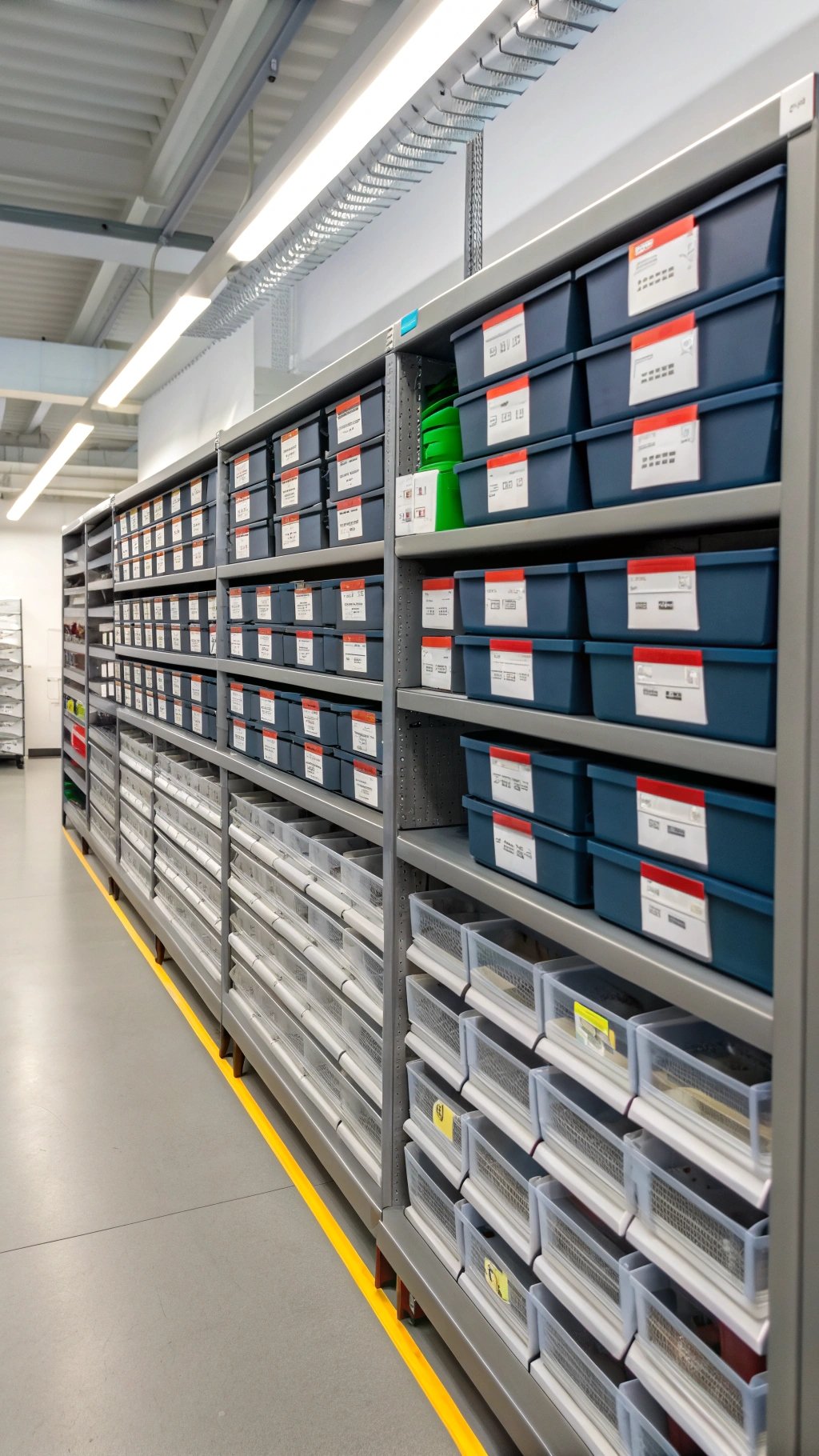
Divide the year into two active capsules plus archive boxes. Off-season pieces go to labeled top-shelf bins; active gear lives at eye level.
A calendar reminder prompts swap days, and a staging rail handles “try next season” items.
What makes something unique:
Add a simple checklist card in each box—what’s inside, what needs mending, what to donate. Seasonal swaps become a 30-minute ritual, not a day-long upheaval. Your closet stays right-sized for right-now life.
12) Laundry Integration That Disappears
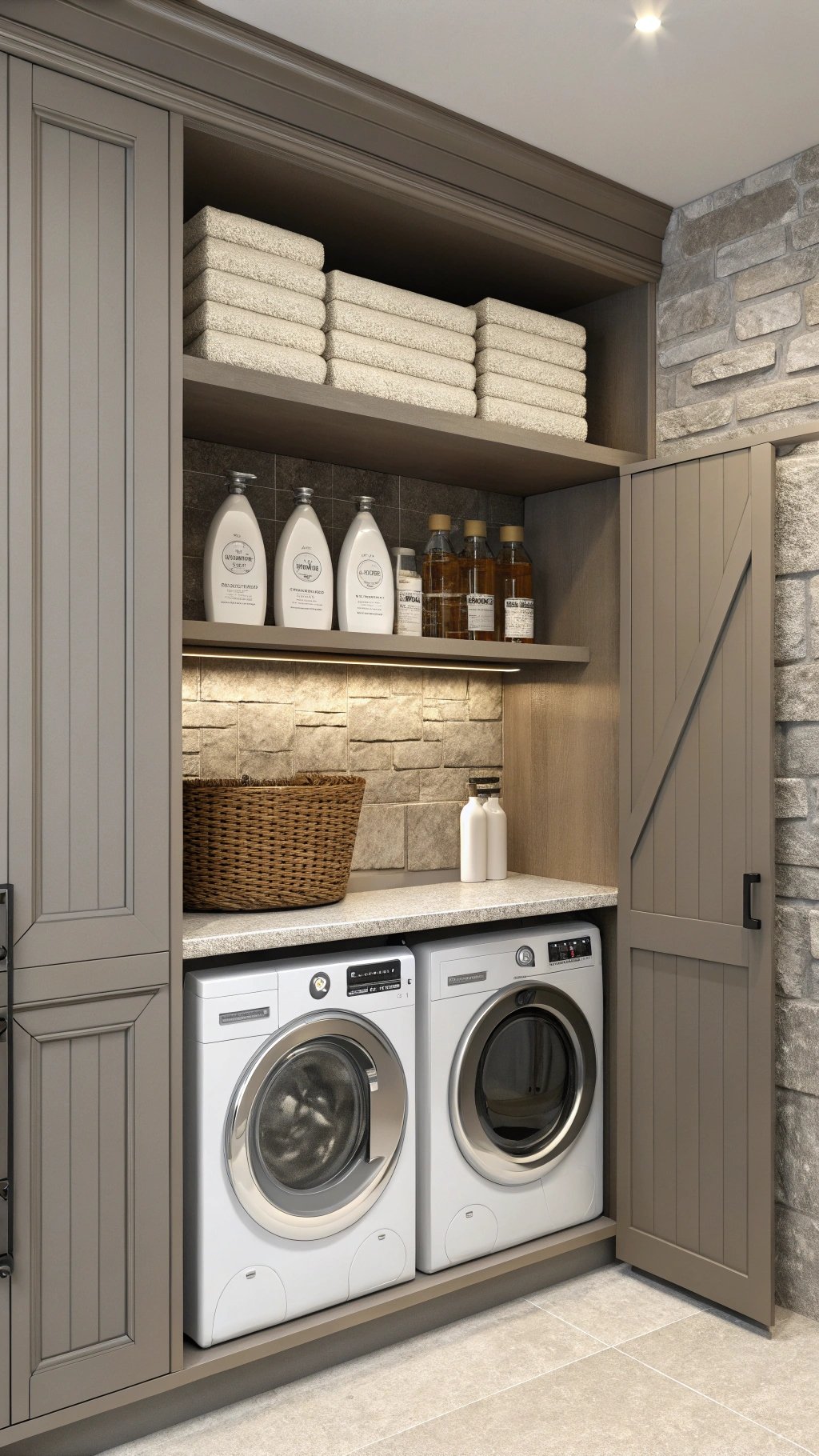
Tilt-out dual hampers (lights/darks) near the vanity zone keep sorting automatic. A hidden pull-out drying rail under a shelf handles delicates.
If space allows, a paneled washer/dryer stack sits behind quiet doors with a folding counter above.
What makes something unique:
Line the laundry niche with the same stone as your island top and use uniform, labeled bottles for detergents. Add a magnetic under-shelf task light for spot checks. Utility vanishes; calm remains.
13) Tech-Smart Labeling and Tracking
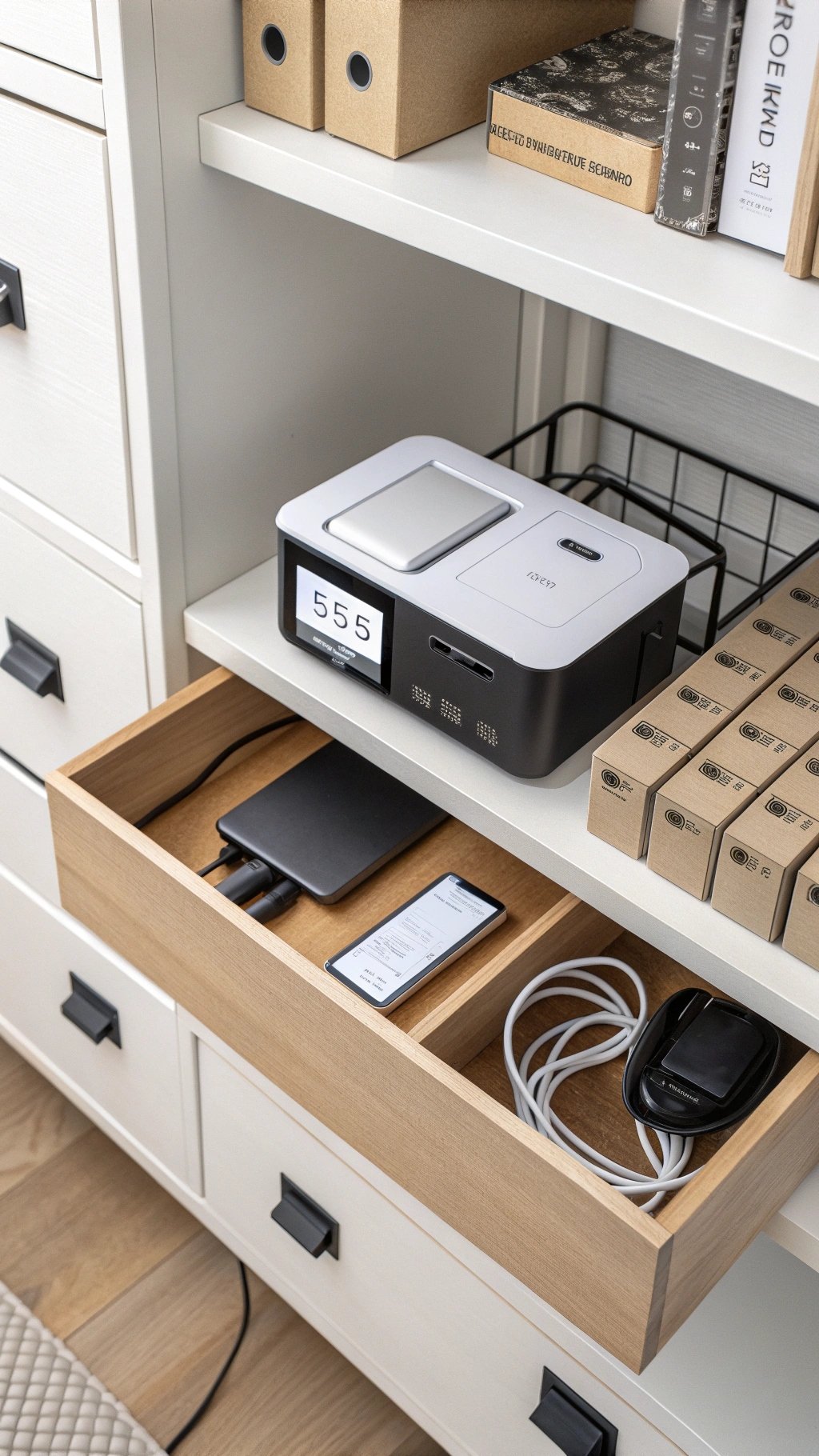
Light-touch tech can prevent closet scavenger hunts. A compact label printer keeps bins consistent. Tiny Bluetooth trackers live in luggage and event bags. A QR code on box fronts links to a simple inventory list.
What makes something unique:
Hide a small charging hub in a drawer with cord pass-throughs so wearables and trackers stay powered. The system is invisible day-to-day, but you’ll never wonder which box holds the silk scarf again.
14) Kid-Ready Closet That Grows Up
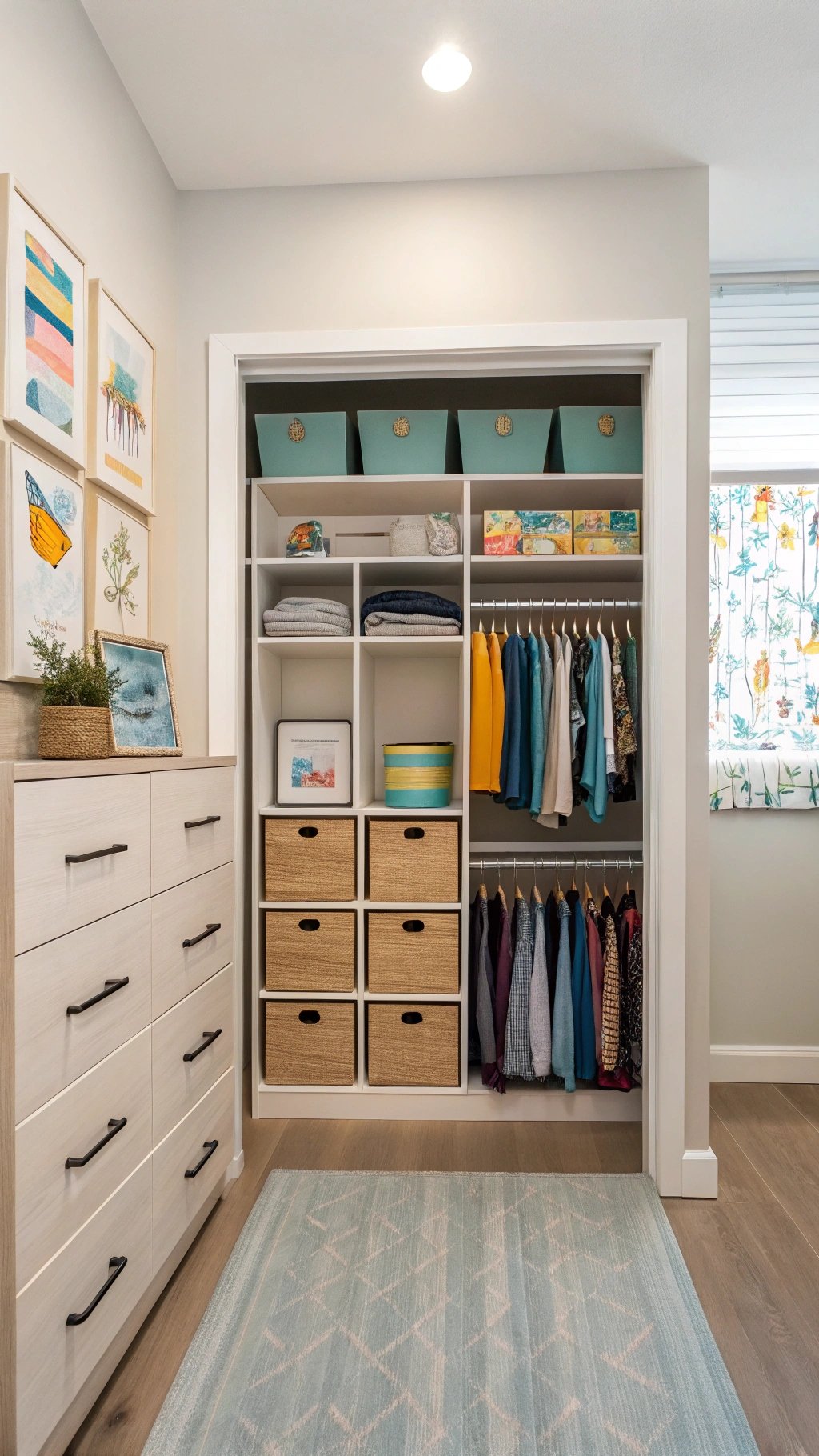
Lower rods, open bins with pictures instead of words, and wide drawers for easy “toss and go.” Place everyday outfits at child height and party wear higher. Durable, wipeable finishes keep scuffs at bay.
What makes something unique:
Swap picture labels for text as reading improves, and raise rods by moving pre-drilled brackets. The closet evolves without a rebuild, teaching tidy habits while staying cute and functional.
15) Shared Closet with Peace-Built In
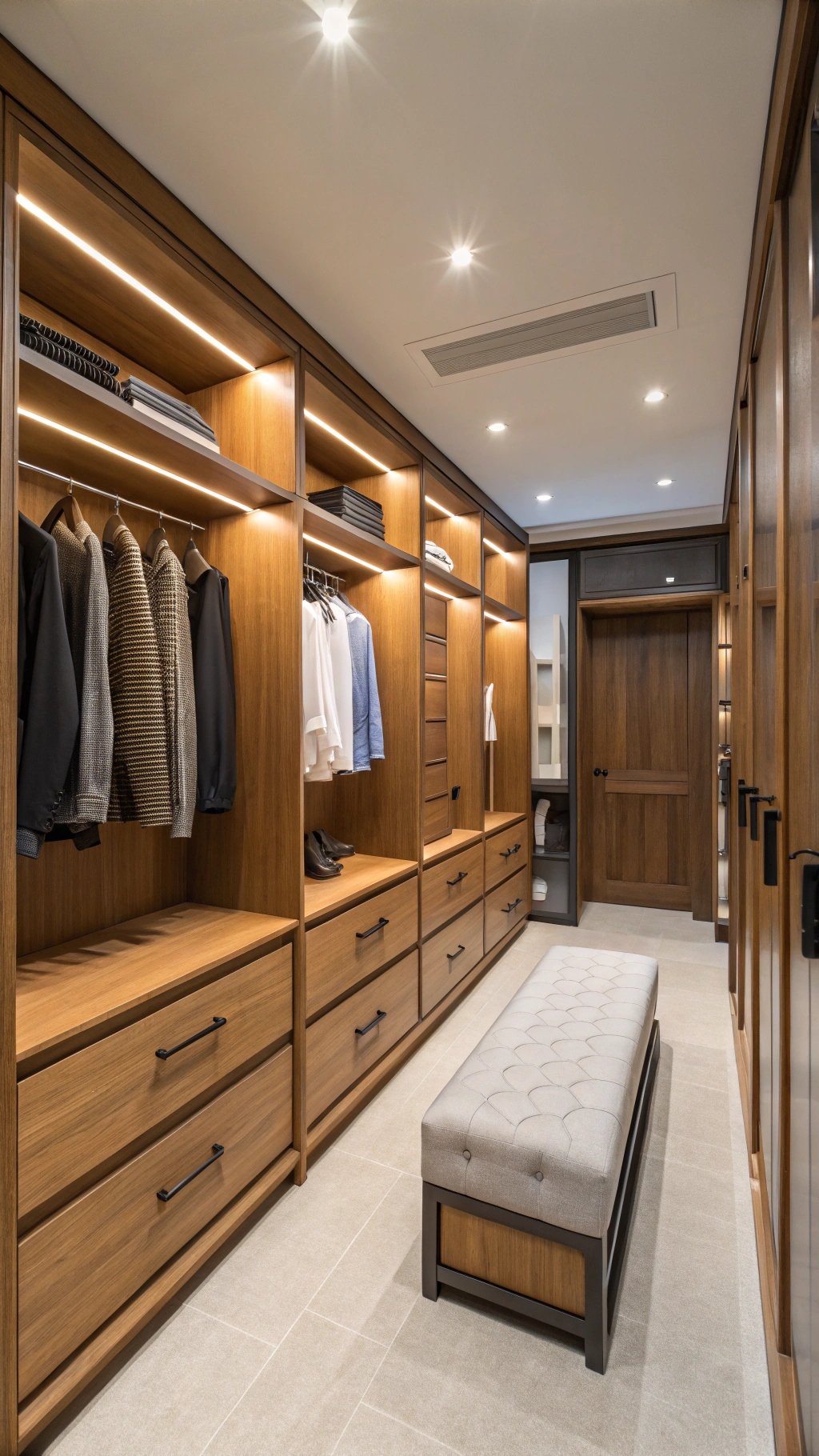
Mirror left/right sections so each user has the same drawer counts, hamper access, and valet rod. Neutral finishes—oak, graphite hardware, linen—keep the space serene. A central bench or island stays community territory.
What makes something unique:
Personalize invisibly: monogrammed felt pads inside top drawers and separate dimmer circuits for each side. Fairness is baked into the plan, reducing “turf” friction and keeping mornings smooth.
16) Travel & Packing Station
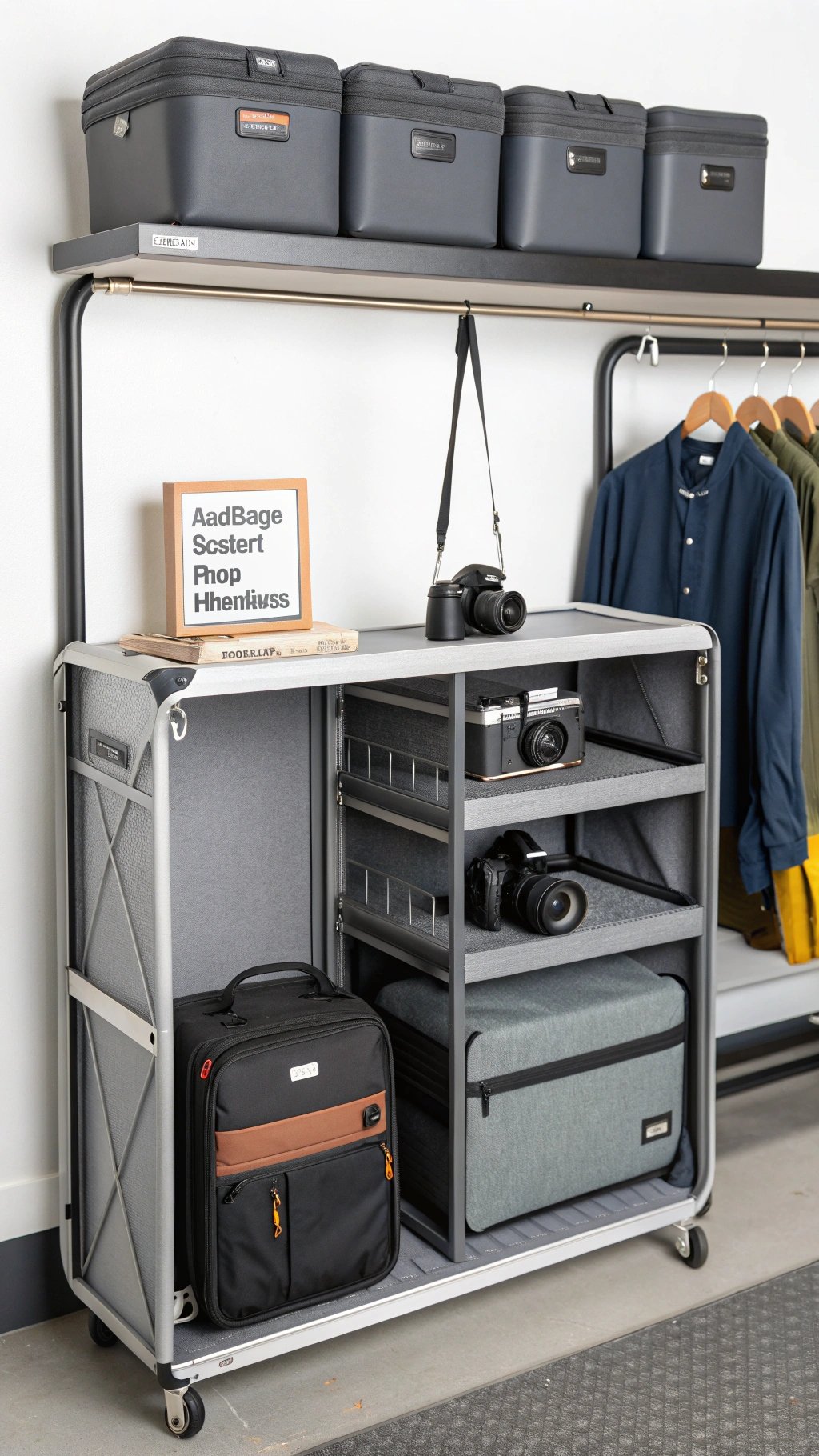
Devote one bay to luggage, packing cubes, a scale, and TSA-size kits. A shallow shelf holds passports and cables; a hook keeps your weekender bag ready. Packing becomes a repeatable checklist, not a scramble.
What makes something unique:
Install a fold-down shelf at suitcase height to stage outfits. Keep duplicates of chargers and toiletries so you never raid bedroom drawers. Trips start stress-free because the closet thinks like a concierge.
17) Sustainable, Honest Materials
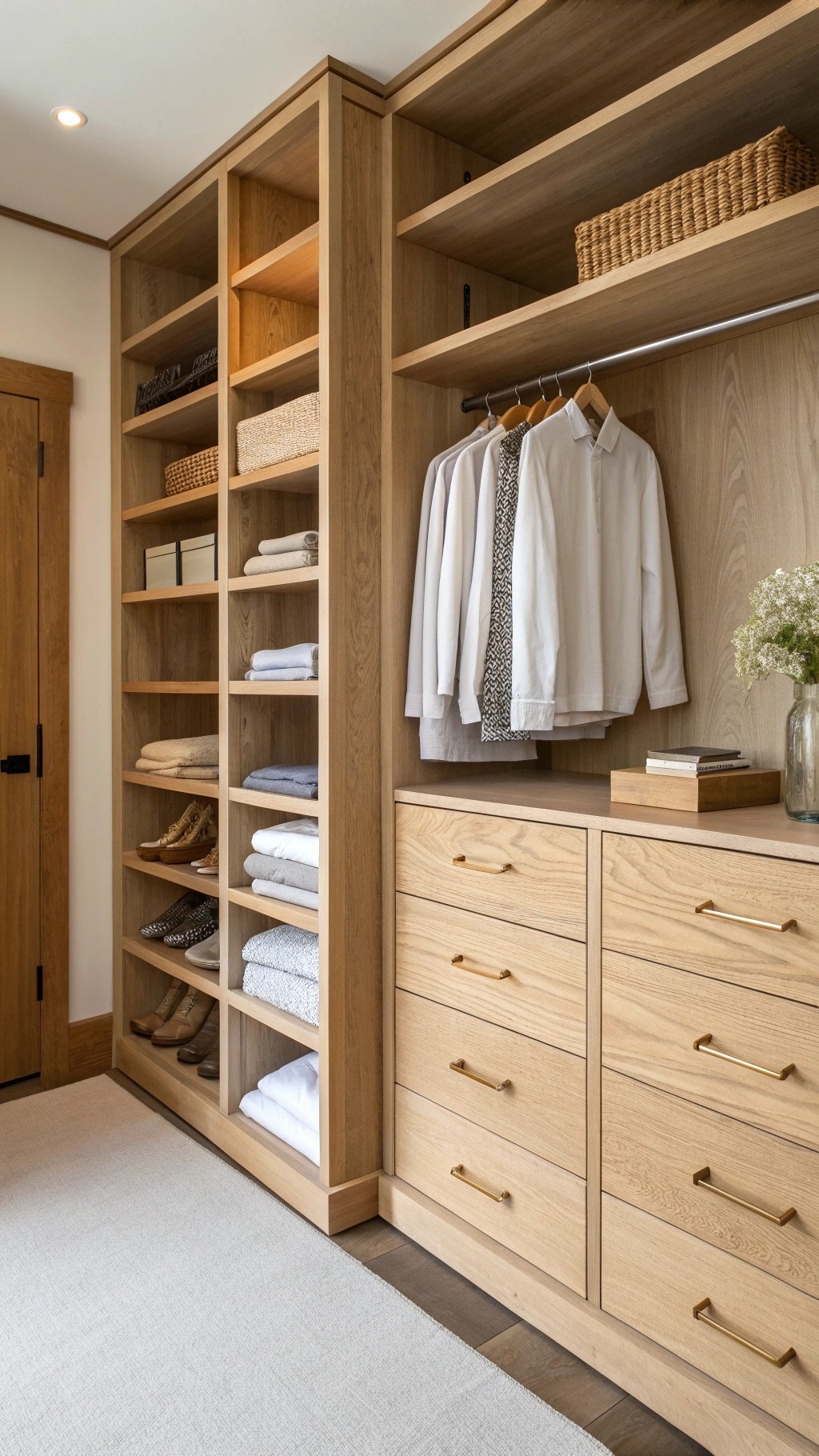
Choose FSC plywood boxes, solid-wood fronts, and low/zero-VOC finishes. Linen or cork drawer liners protect clothes without plastic. Solid metal hardware patinas rather than chips, aging with your wardrobe rather than fighting it.
What makes something unique:
Show the craft: exposed dovetails on a reclaimed display shelf and a small provenance note inside one door. With high-CRI lighting, textures glow—and you’ll enjoy a closet that gets better, not dated.
18) Entry or Micro-Closet That Pulls Above its Weight
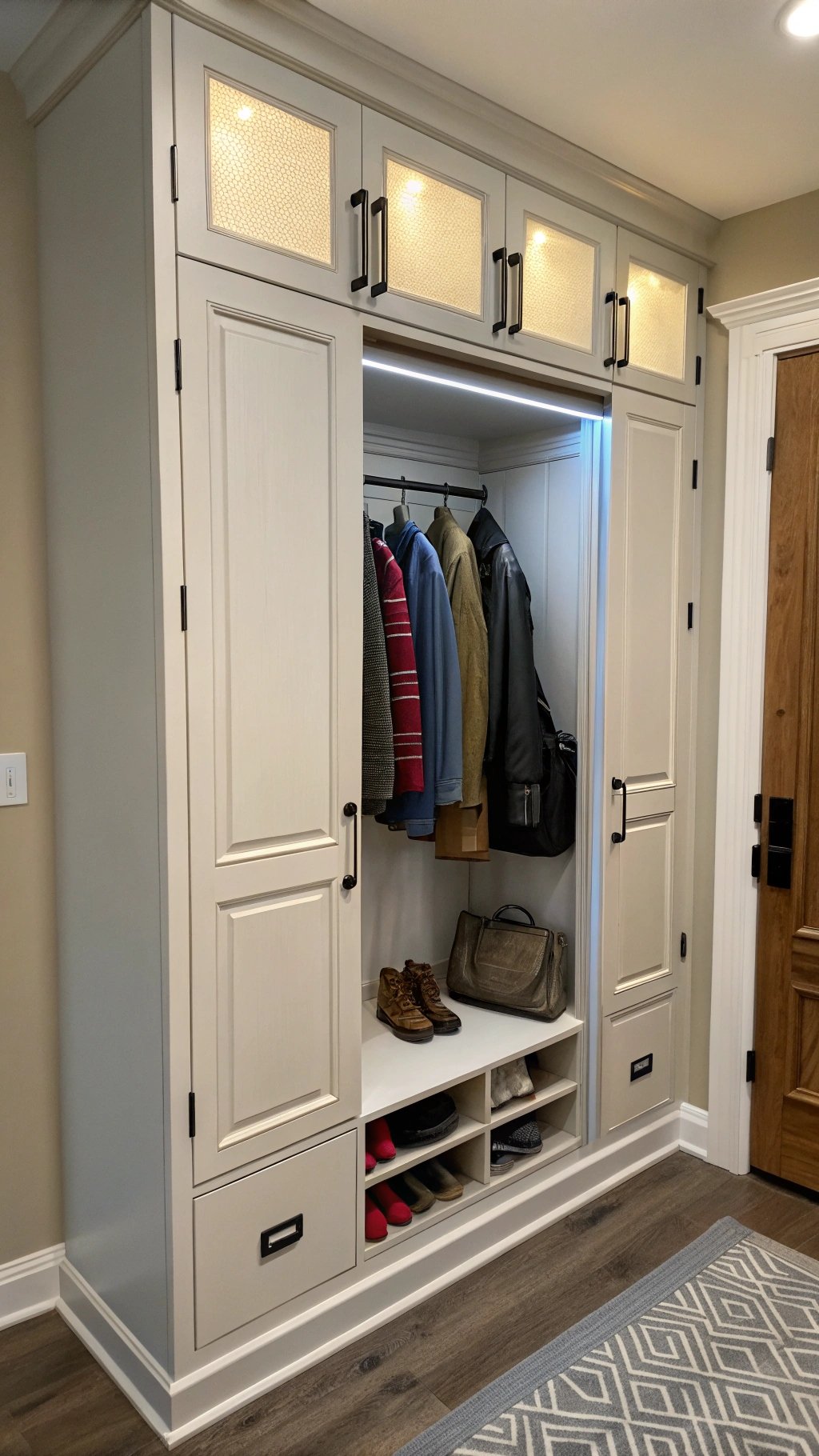
In tiny spaces, use a floor-to-ceiling locker approach: closed cubbies for visual calm, a single open niche for keys and sunglasses, and a drawer for gloves. Back-of-door hooks manage umbrellas and totes.
What makes something unique:
Color-drench the micro-closet to unify odd trims, then add a motion-activated toe-kick light for late returns. You’ll get a welcoming, organized landing even when square footage is scarce.
19) Five-Minute Reset Ritual
Great organization fails without maintenance. Keep a slim “reset kit” in a drawer: lint roller, fabric shaver, seam ripper, spare buttons, and a mini steamer. End the day by returning three items and staging tomorrow’s outfit.
What makes something unique:
Pair the kit with a tiny checklist on the inside of the door—Return, Reset, Ready. The habit keeps systems honest and the space permanently presentable, no weekend overhauls required.
Quick SEO-Friendly Takeaways
Design for how you dress (capsules), not just what you own.
Layer lighting (ambient, task, accent) at high CRI for true color reads.
Build storage into architecture (niches, drawers) and make resets a daily ritual.

